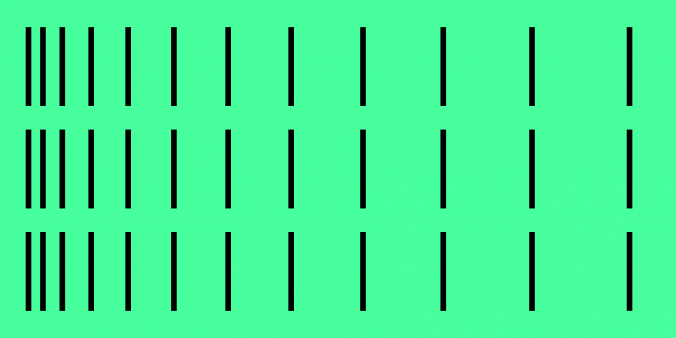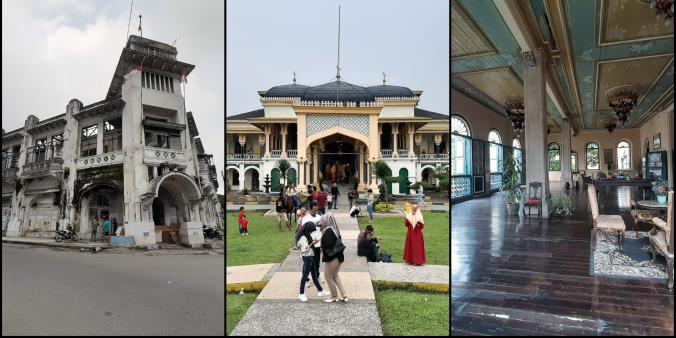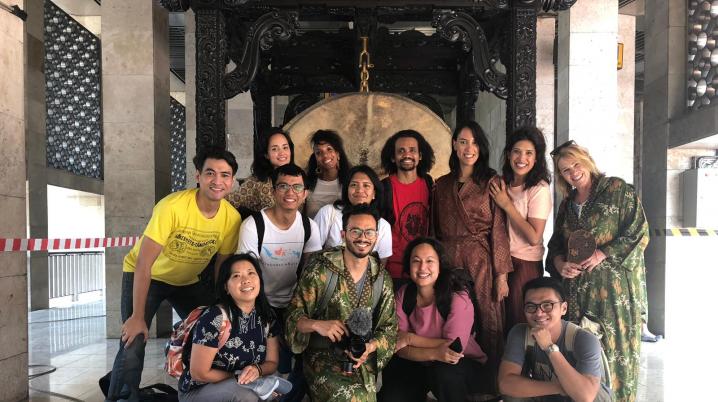
Keynote speaker Ayu Utami at Indonesia Now: "From the history of borders we shall move to the history of freedom"
DutchCulture and the Netherlands Ministry of Foreign Affairs organised the third edition of the conference Indonesia Now on Tuesday 12 November 2019. Writer and LIFEs (Literature and Ideas Festival) director Ayu Utami wrote a keynote about the project My Story, Shared History.
"I arrived on European land on November 9th, when in Berlin people were celebrating the 30th anniversary of the fall of the Berlin wall. News stations univocally broadcasted Chancellor Angela Merkel’s very strong speech, in which she said, 'The Berlin wall is now relegated to our history. No wall separates people again. No wall is so high or so strong that we cannot break it'. The message is very relevant today knowing that many governments and communities are still wanting to build walls to separate people.
Thirty years ago, I had just entered university when the Berlin wall started to creak and finally broke down. I was part of Indonesia’s young generation at that time. Even from Indonesia, I watched the news with a feeling of disbelief. The Berlin wall was an epitome of a mental wall materialised, a mental border manifested into a physical one. It is actually rather creepy to realise the existence of a mental border materialised, and it came gradually; only after the wall started to crumble. When the wall still stood there, it seemed just natural. And natural means normal. A construction seems normal until somebody breaks it. A border seems natural unless some people challenge it faithfully.
The fall of the Berlin wall, in 1989, brightened the spirit for change in Indonesia, the spirit of my generation, born and raised under General Suharto’s rule. With the help of the economic crisis, that change happened in Indonesia nine years later: the 1998 Reformasi.
Freedom vs walls
In general we all want freedom. It is the freedom from slavery that the Passover celebrates. It is the freedom from attachment that the Asian religions taught. It is the freedom from any dangers that the Javanese celebrate in selametan. It is the freedom from the oppressors that a modern nation’s historiography writes. The Dutch had their freedom from the Spanish. The Indonesians celebrate their freedom from the Dutch. The Americans memorise their freedom from the British empire. In general we all want freedom.
However, in reality, we see people keep building walls. Now, 30 years after the fall of the Berlin wall, 20 years after the Reformasi in Indonesia, people are building walls again. Physical as well as mental walls. Walls separate people. Walls exclude some people. Every time a wall is built to include a group, it excludes others. It cannot be inclusive without being exclusive at the same time. That’s the internal irony of a wall.
Strangely, it seems that people need walls as much as they long for freedom. That’s the external irony. Trump builds a wall on the border of the US and Mexico. Some people in Europe want to build physical as well as legal walls to keep migrants away. In Indonesia, there are many mental walls — under the name of nationalism, religion, ethnicity — being built even after the Reformasi.
Here, I want to focus on one mental wall. That is, the mental wall created through our historiography. A wall is a construction. It is a construction that excludes other things whenever it includes one thing. The question is: is there any possibility of a construction that does not exclude? Regarding a mental construction, this question can be expressed this way: can we arrive at a definition without marking the semantic boundary? Can we make a definition without defining the boundary of what we mean?
In legal matters, no. It is not possible, because legal affairs work in the logic of boundary. But, in order not to make our talk too philosophical or complicated, let us put it this way: life is bigger than legal matters. History is broader than legalism. Our history, our present, and our future need to be approached not with the logic of borders.
National historiography
Unfortunately, until today, national or communal historiography is often approached with the logic of boundaries. National or communal historiography, as they are written to build or to maintain a sense of identity of a nation or a community, usually have these traits: 1) nationalistic or communalistic; 2) patriotic; and, 3) ideological, in the sense that ideology is superior to individual experiences. This explains why national historiography tends to be black and white.
Historiography in Indonesia and in Asian nations in general is still attached to these traits. In the post-World War Europe, historiographies may have started to lose these characteristics. However, the rise of the far right ideologies and movements in all over Europe in recent years show that it is probably a perennial drive or a latent phenomena.
On the other sides, even if today’s Dutch historiography is less nationalistic, less patriotic, less ideological than before, there are still many groups of people whose histories are excluded from the official version. Here I want to mention an inspiring project called 'Mapping Slavery' or the slavery heritage project, carried out by dedicated activists and academics — among them is my own friend Nancy Jouwe. It aims to open up our awareness of the history of the enslaved people we have overlooked because we have been too obsessed with the glory of the masters. Like the tourists in the Rijksmuseum who are fascinated by the magnificence of the Golden Age paintings and are not aware of the slavery and other forms of exploitation that supported the Dutch Golden Age. We need to visit the history of the enslaved and the silenced.
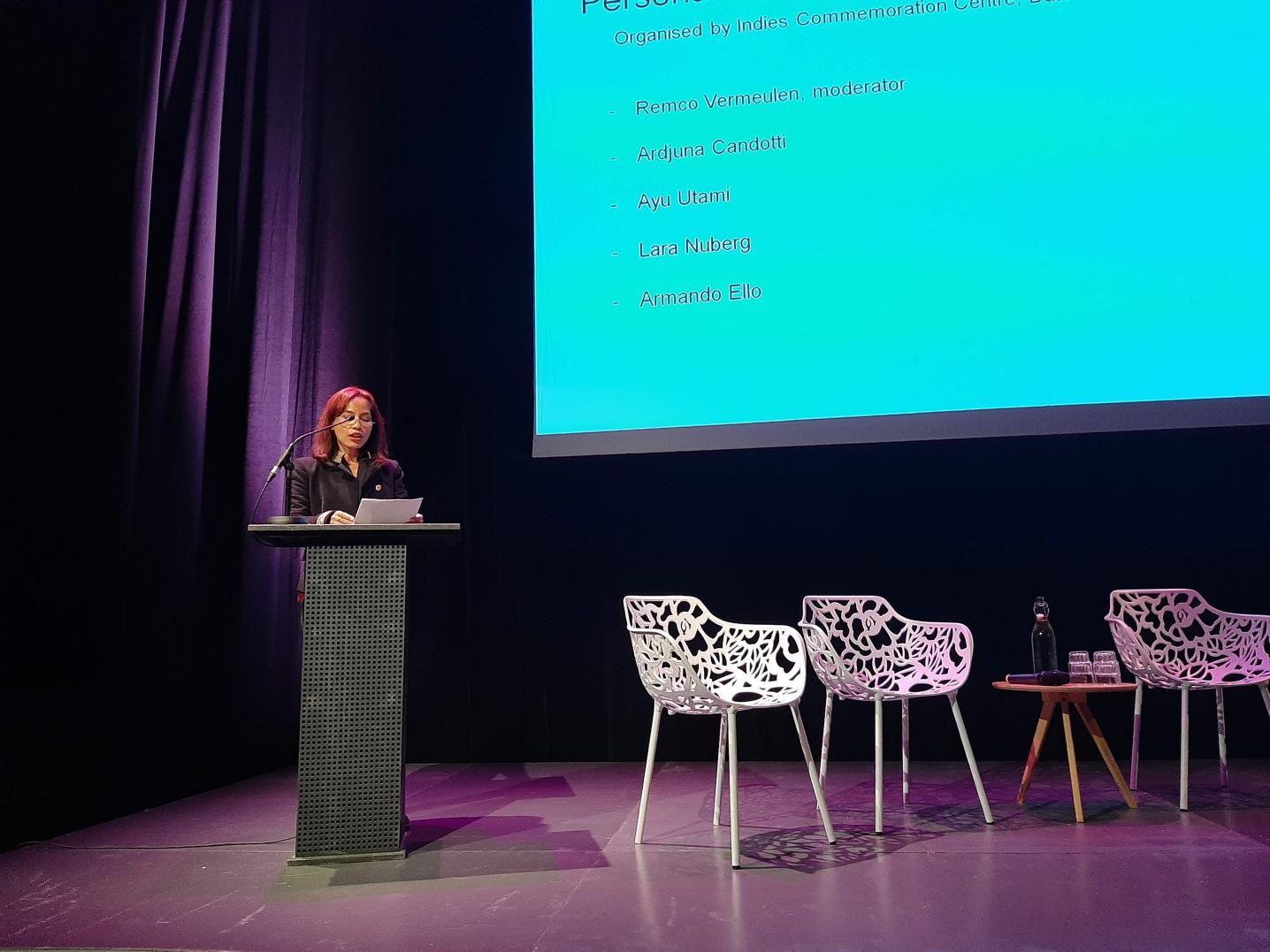
My Story, Shared History
I thank Nancy Jouwe who introduced me to this beautiful project which became an inspiration for our project My Story, Shared History. But I shall add here that we should not become fixated on identities. The masters are not always white or white males. The enslaved are not always people of colour. During the Second World War, the Dutch and the 'Indos' were being oppressed by the Japanese, for a short but deadly period. In independent Indonesia, throughout a long period, colonisation and oppression repeats itself again and again among people of the same colour and of the same nation.
Physical borders can be built with any material. They can be built with stones, bricks, barbed wire fence, electricity: anything. Mental borders can be built with any form of identity. It can be identity relating to skin colour, language, ethnicity, religion, sex, weight, height, body shape, purchasing power, anything!
We need to be aware of the subtlety of border mechanisms. Given the complexity of the subject, it’s not very easy to explain it in a logical way to our kids. That’s why we need help from the arts, as art can communicate without resorting to instruction or explanation. It is very important to make the next generation understand this complexity. Here, I want to underline the urgency to give attention to Indonesia’s future generation and why we need to prepare them for an unprecedented complexity.
Indonesia is having its demographic bonus within the next 20 years. The productive age group (15-64 years) constitutes more than two thirds of the whole population. If we want to narrow down the age category to 15-49 years, it still constitutes more than half the population. This is the demographic structure of Japan in the 1950s when it became an industrial power. When now Japan and Europe are ageing, Indonesia is young and energetic. It will be a moment of economic momentum! But, only if the young generation is prepared to use this momentum. If not? Indonesia may be doomed to the middle income trap. Or worse, its youthful vitality could turn destructive. If Indonesia is not managed in the right way; if corruption continues, if the economy becomes unstable, we could see that 'closed historiography', or 'the logic of boundaries', give irrational reasons for identity politics, intolerance, racism, and violence. Let’s not imagine a population as huge as Indonesia turning destructive! We have to work together.
'Power of the tide'
I’d like to quote Angela Merkel again here, when she quoted Vaclav Havel saying that freedom is like the sea; the individual waves may not seem to do much, but the power of the tide is impossible to resist. The words are a powerful encouragement for me, as sometimes I feel my steps, our steps, Komunitas Salihara’s steps, Indisch Herinneringscentrum’s steps, DutchCulture’s steps, are very small for an effort that needs to change the way history is written and taught. We want to have a historiography that is inclusive without being exclusive at the same time. Is that possible?
Yes, that is possible — with the moral support of Havel’s magic words. I want to share with you a project called My Story, Shared History. This is a joint project of Komunitas Salihara, Indisch Herinneringscentrum, and DutchCulture. In this initial project, we paired up six Indonesian writers or artists with Indo-Dutch partners. Why Indo-Dutch? First of all, of course because of the role of the Indisch Herinneringscentrum in this project. Secondly, because the 'Indos', being perceived as half blood and double blood at the same time, represent the in-betweenness that each of us actually experiences without being aware of it. They are the incarnation of a mixture as well as ambiguity that is actually the basic existence every human.
Broaden perspectives
The coupled artists met in July or August this year (2019). They were asked to broaden perspectives, deepen a thinking process, assist each other or collaborate to create works regarding the topic of family history and how it relates to the national or even global history. We, the organisers, did not expect them to come up with final artistic works. We are happy enough with an ongoing process from which we can learn something. But, for me, the most important thing is that we have tried to tap a practical method from these workshop experiences that can be applied in the future in classes at schools or in other workshops for students or even teachers. A method for developing an inclusive historiography. A method to give structure to understand freedom in order that we are not afraid of freedom.
Now, these are some simple methods that we could draw from a project that has just begun:
• Encourage micro history or history of small and daily objects. Micro history will help us escape from the trap of grand narrative and ideological perspective.
• Begin with family or personal stories and connect it to the communal, national, or global history.
• Mix history lesson with arts or other forms of creativity. Make history an expression and not only knowledge that is to be learned.
This method, if applied massively at schools and in other platforms, will hopefully help:
1) To change a closed approach of historiography into an open or inclusive one. When students learn to write their own family history, both through a story of family members or an object dear to that family, and connect it to the national history, they learn by experience that a grand narrative does not present a complete version of history, because their own family stories are not there. They will understand that history is full of hollows or empty spaces and that everybody has the right to fill them in. When they practice this at school or in a group, there is a chance that they will come across differing versions of history from their friend’s stories. If they learn the experience of differences through trust and friendship, they will develop the capacity to process differences maturely.
2) This method will also help to make history classes more attractive and interactive by combining them with creativity. Make history a storytelling ability. History is not just an objective subject of knowledge. History depends on the perspective of the persons who see it. History is also a human expression. So, we have to pay attention to the subject who knows and who learns. Give the children an open structure, a capacity and a chance to express their own history and value it maturely.
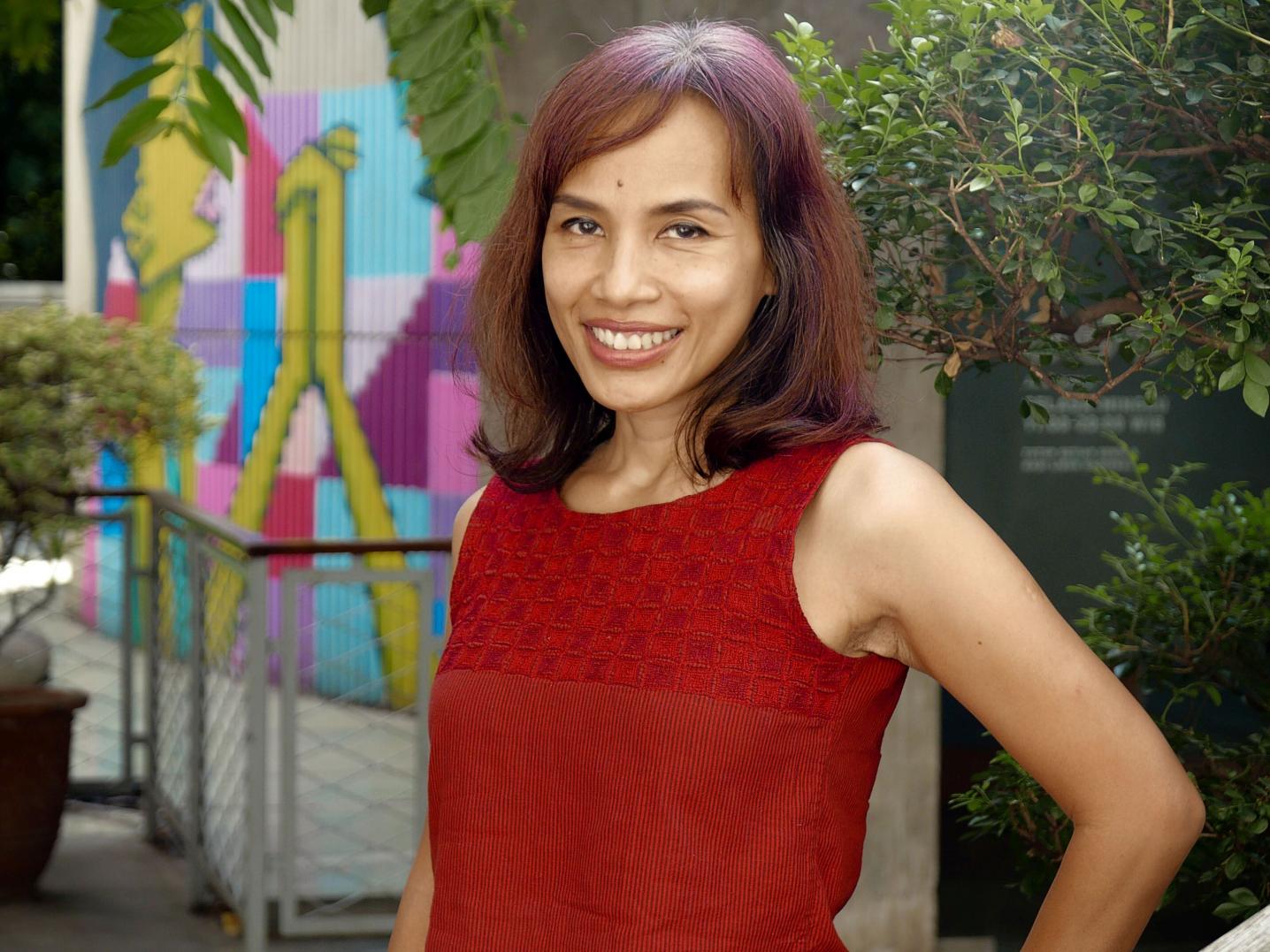
Inclusive and interactive historiography
Back to our project, My Story, Shared History. Here, the experienced writers and artists — like the fellows of this project — can help, give examples, give workshops to the unexperienced teachers and students in order that they learn how to express their personal history with an artistic quality and in a responsible way. And, nothing is better than art and creativity to teach us about freedom.
In the next years, LIFEs will continue to experiment and to polish this method. Our aim is to make possible a historiography that is inclusive, interactive, and enjoyable.
I thank my dear friends and partner institutions: Remco Vermeulen from DutchCulture and Ardjuna Candotti from the Indisch Herinneringscentrum. Together we can hope that we can change the way we see our history. From the history of borders we shall move to the history of freedom. From the logic of boundaries we shall move to the spirit of freedom."
